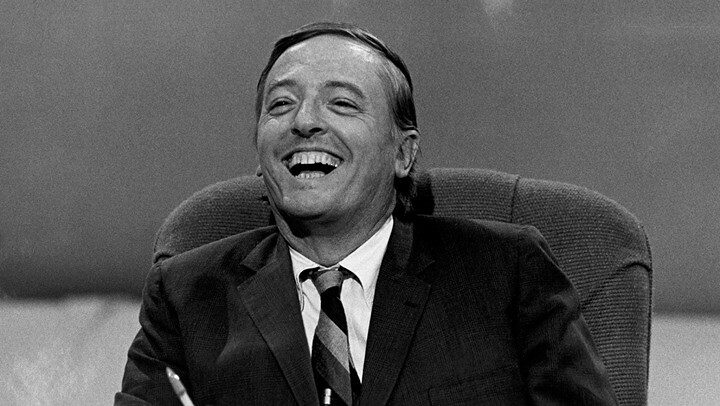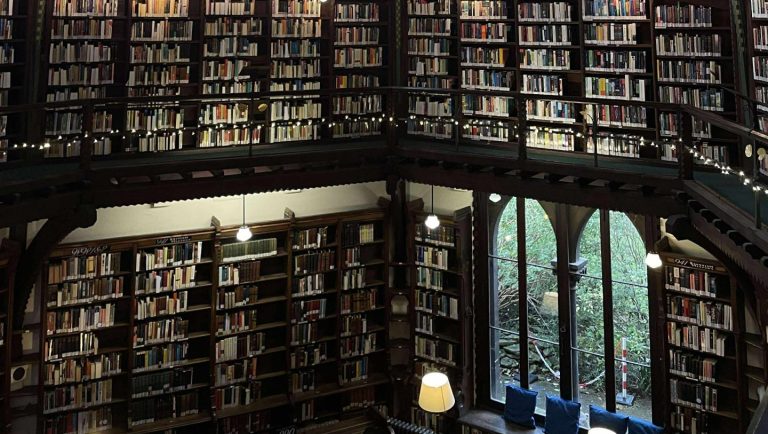Niamh Lynch did not expect to attract international attention during Trinity term of her second year. That changed after her arrest at Stonehenge for spraying orange cornflour onto the ancient monument. From there, it was a barrage of articles, press requests, and more praise than she’d expected. Not that she registered much of this. Almost immediately after the protest, Lynch went to the Isles of Scilly to carry out her dissertation fieldwork. In her brief contact with her parents and friends, they would carry reports that “there’s been something in the paper, another thing in the paper, and someone’s saying this, someone’s saying that”. Lynch was unperturbed: “Jeez Louise, okay…I’m fine, just monitoring my birds, living in my tent.”
Perhaps that was for the best. The protest was not well-received in the political arena. Then prime minister Rishi Sunak called it a “disgraceful act of vandalism”. Sir Keir Starmer, then Opposition leader, was barely a few steps behind – he called for the protesters to face the “full force of the law”. Online abuse mounted. None of this was expressed to Lynch in person: “People were saying it was cool. I had loads of messages from my uni friends” expressing admiration. Even those who didn’t agree with her actions appeared to understand that she was acting from “a place of love and a want for things to be better”.
That understanding didn’t just extend to her peers. Last month, Lynch and her co-defendants Rajan Naidu and Luke Watson, were acquitted unanimously of causing a public nuisance and damaging an ancient monument, making waves in activist circles: “My phone has just been pinging with messages from… activists who have seen it all, who have been doing this for 60 years.” It comes at a time when the climate protest movement could do with some hope. More arrests are being made under nuisance laws than ever before. Sixteen sentences handed down against climate protesters in the last year have been found to be manifestly excessive. And even once activists are released from prison, they may face licence conditions which are generally reserved for extremists. Despite this, Lynch is “tentatively optimistic”. Her experience at trial is a glimpse into the future of protest in the UK, and how student activism forms the foundation of national efforts.

Ancient Monuments Act 1979
This was the first time the Ancient Monuments Act had been used for a prosecution. The Act covers tens of thousands of scheduled monuments, and its name is slightly misleading: the list includes World War I factories and a swing bridge in Oxford built in 1851. It made Lynch’s bail conditions perplexing. She couldn’t go within 100m of an ancient monument. This would prevent her from going within 100m of the Oxford city walls, Oxford castle, and the Grandpont causeway (which runs underneath Folly Bridge – good luck getting to the Cherwell offices). This wasn’t seriously followed up, but raises concerning questions for future prosecutions. With such restrictive conditions permitted under the Act, activists could end up in a kafkaesque spiral of avoiding 20,000 different sites across the UK. There is no debating that Stonehenge is an ancient monument, although the same cannot be said for many other sites on the list.
There was considerable debate before trial whether Lynch and her co-defendants had caused any physical damage to the stones. One argument put forward had been damage to the rare lichen that made their home there, but the prosecution’s own expert witness certified that there had been none. Lynch found this the most reassuring outcome: “It wasn’t that the defence had commissioned a lichenologist report that was likely to be sympathetic…this was the prosecution’s expert witness.”
The serious annoyance of bad drafting
There was something surreal for Lynch about her prosecution under the Police, Crime, Sentencing and Courts Act 2022 (PCSC). She was arrested for aggravated trespass and damage to an ancient monument, but the CPS later changed the charges to public nuisance, after “the police told us it was being referred to the specialist protest unit of the CPS”. Public nuisance is now a statutory criminal offence, established under the PCSC. The 2022 Act attracted huge protests while it was going through Parliament. Its vague definitions, increased ability of police to place conditions on gatherings, and expansion to peaceful and non-violent protest were strongly criticised. Lynch herself had attended those protests, watched friends be arrested, and eventually been arrested under the same Act. She recalled reading the bill in 2022 and seeing the lack of definitions for serious annoyance: “I remember… thinking this is wild…and that was literally what we were debating in court last week.”
A public nuisance under the PCSC is committed when a person does an act (or omits to do a legally required act) that creates a risk of serious harm to the public or a section of the public. While serious harm is defined in the Act, it’s split into three categories, and one of them is not like the others. Death and personal injury appear clear-cut questions of fact, as does loss of or damage to property. However, the prosecutions under the Act have largely arisen from section 78(2)(c), the third category: “Serious distress, serious annoyance, serious inconvenience or serious loss of amenity.” Defining serious harm and using it as an adjective four times gets a reader (or a judge) no closer to understanding just what “serious” means. As a result, the scope of public nuisance is broad and open to overuse, particularly against protesters. After all, protest is intended to be disruptive.
The prosecution attempted to take advantage of this breadth. The prosecutor Simon Jones told the jury that annoyance, distress, and inconvenience were “common English words” which did not require explanation. He appealed to how they felt when they heard the news of the protest, to which Lynch took issue: “They said so many times to the jury, you judge this case just on the facts that you hear in this room. But then they’re being told by the prosecutor to think about how they felt at the time.”
The most serious aspect of the whole trial, for Lynch, was the potential ten-year prison sentence: “The only thing you’ve got to go on is the fact that it’s serious in the context of a ten year maximum prison sentence…That is how serious the seriousness has got to be.” For comparison, grievous bodily harm (GBH) or wounding without intent to do serious harm will give a maximum five-year sentence. Racially or religiously aggravated GBH or wounding will give seven years. Bringing these questions into criminal law had been daunting to activists, particularly when looking at the length of sentences.
In order to threaten a ten-year sentence the case must be tried in the Crown Court, which brings in the option of a jury trial. Lynch was acquitted unanimously by a jury, which meant a lot to her, particularly since they were all from Wiltshire. “There is a huge, huge love for Stonehenge in the country, but especially in Wiltshire and in Salisbury” – it was “massive” for “twelve members of that community to say you did a good thing”. She saw the reasoned deliberation of the jury, and the careful discussion of facts throughout the trial, as an antidote to sensationalist, unnuanced reporting.
A question of human rights?
In the end, Lynch was acquitted after using the defence of reasonable excuse. The defence is found within the Act, but also drawn from Articles 10 and 11 of the European Convention on Human Rights (ECHR), which protect freedom of expression and freedom of peaceful assembly. Together, they effectively form the rights to protest. The defendants have to apply to the judge for permission to use the defence – while Lynch was successful, many other activists have been denied. She knew people who “weren’t allowed to use their article rights because the act of throwing had an essence of violence”. Protesters have praised the defence for the nuance and context it brings to cases, but whether it is available at all depends on the discretion of individual judges. It also depends on continued support for the ECHR.
In its article on the acquittal, The Telegraph attributed the decision to the ECHR. Lynch emphasised that this may not be the reason. For the jury to convict, they would have had to have found that the defendants caused damage, were reckless to causing damage, and had no reasonable excuse. To acquit, they would just have to find that one of those three elements was absent. The jury may have found that there was no damage (on the Ancient Monuments charge) or no serious annoyance (on the public nuisance charge). Lynch argued: “We haven’t been let off because of the ECHR. I think we’ve been found not guilty because there is no case.”
This defence has been valuable for activists, but whether it will continue to be available is dubious. Two prominent political parties have strongly advocated repealing the Human Rights Act and pulling out of the ECHR, which would dismantle the foundation on which it stands. Even at the moment, the availability of the defence depends on the discretion of individual judges, leading to a patchwork of decisions and extreme uncertainty that could lead to a chilling effect on protest.
The future of student protest
Lynch was optimistic about the future prospects of protesters, particularly in the light of the ruling. Still, the fact that one judge applied the law sympathetically does not change the fact that Parliament’s words could be interpreted in any way, and that this area of case law is by its nature uncertain and unpredictable due to the vague wording. More broadly, it’s not a pretty picture. Justice Secretary David Lammy recently set out proposals to phase out jury trial for almost all indictable offences. Just Stop Oil has ceased protesting disruptively Lynch herself said she wouldn’t carry out any similar protests in the future. After the police posted her town of origin (which is their standard policy), she remembered being “suddenly kind of scared, being on my own thinking that one of the people that [didn’t] like me could literally just come and knock at my door and, you know, do anything”. She didn’t want to put her family through the same stress again. At the same time, she saw a strong community of activists, particularly based in universities. She’s been involved with activism for some time, taking part in the Fridays for Future climate protests and Extinction Rebellion before university. Once she got to Oxford, she joined the activist societies at the University. There, she found company in people who “see the world in a similar way…and this desire to change it”. There was a practical importance to this as well. Planning a protest, anticipating arrest, and navigating the legal system are all daunting tasks. Being surrounded by people who had been through the same experiences gave some “power in a situation where you’re otherwise totally powerless”.











